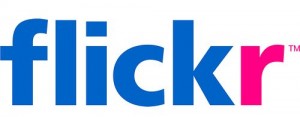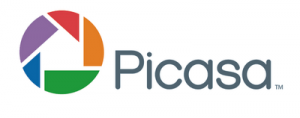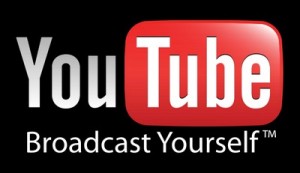Following on from my article Hints and Tips for Job Seeking, here is the next article in my job seeking advice series focusing on the importance of networking with an online professional presence.
Happy hunting!
Wealie
x
The number of professional networking sites out on the internet these days is growing rapidly. However, many of these are niche networks, or have a fairly short shelf life due to a lack of a sufficiently wide enough audience. It’s important to be sure that you focus the effort required to maintain an online presence with networking sites that will provide real and tangible benefits to you.
LinkedIn - Building Connections
The professional networking site you really need to focus on building a profile with is LinkedIn. Basically LinkedIn works like a cross between Facebook, Twitter and Facebook groups, but for professional and business relationships.
It’s a fantastic resource for maintaining existing business relationships, reacquainting with old ones and building new relationships whether they be with potential employers, recruitment consultants, employees, suppliers, business partners or clients.
There are a wealth of tools included on the site and the degree to which LinkedIn will be of use to you will very much tie in with how much you utilise these tools. The site allows you to do the following:
- Set up connections with people that you have had a professional relationship with in some capacity in the past or present
- Communicate with your network through internal email style messages, discussion groups and status updates
- Provide and receive professional endorsements of your contacts through the writing of personal recommendations
- Meet new people by requesting introductions through your contacts or by joining discussion groups and requesting contacts
- Update your status in a similar fashion to Facebook and you can link your status updates to show your Twitter Feed as well
- Set up discussion groups to build niche networks and/or to discuss topics of interest to your profession or business sector
- Provide links to all your other online profiles
It’s a great place to connect with your work colleagues old and new, build a reputation through your recommendations, get introduced to potential colleagues through your network contacts and find out about what is happening within your industry through discussion groups. Discussion groups are also a great way of making new contacts and finding out about vacancies before they are advertised on the job sites. I have a number of recruitment agents as contacts on LinkedIn, so they can always see when I’ve completed a contract and looking for new work when I update my status.
I personally think that LinkedIn is on its way to becoming as essential as your CV in terms of job hunting. I would advise everyone to take the time to invest in setting up their profile as soon as possible.
Google Profile – Advertising Your Presence to the World
 It’s also a good idea to set yourself up with a Google Profile. The best way I can describe it is like having an online advert for you as an individual person. If used correctly it can pull together the links to all your online profiles in one handy place.
It’s also a good idea to set yourself up with a Google Profile. The best way I can describe it is like having an online advert for you as an individual person. If used correctly it can pull together the links to all your online profiles in one handy place.
You can add a short biography of yourself, plus information about where you’ve lived, where you currently work and have worked in the past and where you went to school. You can also add photos by linking to an online photo sharing service such as Flickr or Picasa which then displays the photos you have or a selection of them that you choose.
You have the option to put in personal contact information, but I would advise being circumspect about the information you share here. You can restrict access to the information to your contacts, but that would mean you could only add contacts that you were willing to share that information with, which could be quite restricting for you. To be honest this is an area of the Google Profile I would advise not using unless you are putting in business contact information and even then it could open you up to receiving spam emails, junk mail and unsolicited sales telephone calls!
Finally the other option you can add to your Google Profile is connecting a Google Buzz account to display your status updates. Google Buzz is very similar to Twitter, but with a bit more functionality, but considerably less take up than Twitter at the moment. Whether Google Buzz will become more popular is debatable and having more than one status messaging service can be harder to keep up to date. However, if you use a service like Tweetdeck which allows you to update multiple status messaging functions from the one programme, the issues over maintaining content on each of these is greatly reduced. Tweetdeck is a multiple platform programme which you can use on your Desktop, iPhone, Android Phone, iPad and within the web browser Google Chrome. Tweetdeck allows you to update the following status updates: Facebook, *Facebook pages, *Facebook groups, *Foursquare, **LinkedIn, Twitter and *Google Buzz.
*Facebook Pages, Facebook Groups, Foursquare and Google Buzz cannot be updated on the iPhone, iPad and Android Phone Tweetdeck Applications.
**LinkedIn can only be updated through the desktop version of Tweetdeck.
Twitter & Google Buzz – Tell the World What You’re Doing
![]() Twitter is a social networking/micro blogging site. Essentially what that means is that it allows you to write and read messages known as tweets, which are a maximum of 140 characters long. Think of it as an online text messaging service, but one that publishes your messages to the whole world! It is one of the most popular social networking services and has been growing rapidly since it first went online in 2006.
Twitter is a social networking/micro blogging site. Essentially what that means is that it allows you to write and read messages known as tweets, which are a maximum of 140 characters long. Think of it as an online text messaging service, but one that publishes your messages to the whole world! It is one of the most popular social networking services and has been growing rapidly since it first went online in 2006.
What you can do on Twitter:
- Follow the tweets of people that are friends or share your interests
- Create lists of people tweeting, such as people who all tweet about a specific topic, e.g. communication, or from a specific location, e.g. San Francisco, or to group all your friends who tweet into one list
- View only the tweets from the people on the specific list – As the number of people you are following rises then you will find lists very useful to ensure that the most important tweets you want to read do not get lost
- Send direct messages directly to specific people (these will be private messages, visible only to the person you send them to)
- Gain a following of people who are reading your tweets
- View the trending topics (what people are tweeting most about) and add your own tweet about a trending topic
So how will using Twitter help with your job search? Firstly it’s a great place to announce that you are looking for work and letting those people who follow your Twitter stream know that you’re available for work. Secondly a number of recruitment agencies have started using Twitter and it is a good way to see when they are looking for people to fill roles without having to call them. Equally if they are following you then when you tweet that you are currently looking for a role they will see it. Thirdly you can view trending topics and/or search Twitter’s tweets for keywords and terms such as “Jobs” or “Job Seeking”.
In addition to the benefits of looking for work, Twitter is also another resource you can use to promote the work and resources that you make available online. A photographer can have a link to his or her Flickr account to send a tweet every time they upload a new photograph. You can do the same thing with videos on YouTube, for example if you were an aerobics teacher, you could upload a video demonstrating your teaching abilities.
Google Buzz
![]() As I mentioned above Google Buzz is another social networking/micro blogging service and is very similar to Twitter, but with not as high a take up of users online at present. However, where Google Buzz has an edge over Twitter is in the additional functionality of the service.
As I mentioned above Google Buzz is another social networking/micro blogging service and is very similar to Twitter, but with not as high a take up of users online at present. However, where Google Buzz has an edge over Twitter is in the additional functionality of the service.
What you can do with Google Buzz in addition to what can be done with Twitter:
- Because Buzz is part of the Google family it has excellent options for integrating with the other Google services such as Google Profile, GMail, Google Reader, Picasa and YouTube, that you can easily set up when you apply for an account
- You can allow your buzzes (messages) to appear on your Google Profile
- It also allows you to link in seamlessly with other non-Google services such as Flickr, Facebook and Twitter
- It allows you to see thumbnails of pictures and links to the larger picture within an individual buzz
Google Buzz has the same advantages to job seekers as Twitter does, so I won’t repeat the benefits here.
As with all the online social networking applications, the degree to which Twitter & Google Buzz will work for you, depends on the time you are willing to put in. I won’t lie, maintaining a useful and regular online presence takes time and effort, but the dividends you receive are well worth the hard work and time spent.
Your Facebook Profile, Pages & Groups – Leverage the Power of Friends
 Although Facebook is primarily a social tool designed for fun a lot of businesses and individuals are using it in a professional capacity. Whether you choose to use your personal profile, a Facebook Page or Group very much depends upon what you are looking to achieve with them.
Although Facebook is primarily a social tool designed for fun a lot of businesses and individuals are using it in a professional capacity. Whether you choose to use your personal profile, a Facebook Page or Group very much depends upon what you are looking to achieve with them.
For most job seekers using your profile will be sufficient, but if you want to demonstrate your skills and experience, or sell a product or service of your own then a Facebook Page or Group might be the way to go. I’ll talk a little about each and what you can do with them in terms of job seeking and raising your profile.
Your Individual Facebook Profile
Although your individual profile is likely to be primarily social, you can use it for professional purposes in the following ways.
- Share details about your job seeking through your status updates
- Message your friends on Facebook asking them if they know of any work going at their place of employment, or anyone in their network looking for people
- Join Facebook groups that are relevant to your profession, skills and experience or recruitment agencies and become an active member of discussions, chat with other group members and contribute to discussions
- “Like” Facebook pages of recruitment agencies, employers you would like to work with, business partners, suppliers, etc, so you can keep up to date with what they are doing and make them aware of your profile
A Facebook Page
You may want to create a Facebook page, which keeps your professional work separate from your personal Facebook information, or to specifically draw attention to it. People can “Like” your page so that any status updates and activity that happens on your page is shown on their news feed.
A page has all the functionality of your profile, (chat, status updates, photos, videos, discussions and events, message people who have “liked” your page, etc) and you are not limited to the number of people who can like your page, whereas you can only have a maximum of 5000 friends on Facebook.
Probably the most useful features are the analytics of the number and frequency of visitors to your page and linking into Facebook’s advertising system to advertise your page. This is a particularly good tool if you are offering a product or service to people.
I personally have two pages, one that focuses on my artistic outputs and another that I share with a friend as part of our Dance Dynamic business for dancers to find out about what’s going on with classes and events and ask us questions.
My personal page is updated primarily automatically through linking it to my various other social networking sites and through TweetDeck. My primary social networking outlets are my Website/Blog, Facebook and Twitter along with my specialist sites Flickr and YouTube. By setting up automatic updating on my Facebook page it remains current without me having to physically go in and add content.
A Facebook Group
Groups are a better tool to use if you are looking to bring a group of people together to discuss specific topics such as a single business or a certain profession. By setting up a group like this you are taking on a certain degree of responsibility for ensuring that in the early stages there is content to keep people coming back. Successful groups have a lively group of members that regularly contribute to it and have all the same functionality as pages, but also group chat and the ability to message all group members and invite them all to events.
It’s worth noting that you can add other people as administrators on both pages and groups to help spread the responsibility of keeping them up to date. However, if you want to keep full control of what is posted then a self managed page is probably the best way to go.
Slideshare & Brainshark – Demonstrate Your Skills
I’ve talked a little bit about how you can offer something back to the world through your online presence, such as participating in the Facebook and LinkedIn professional groups, or providing links to good resources through your buzzes or tweets.
If you work in the corporate world and/or have a corporate profession or simply want to share your skills, experience and knowledge then you might also find the following services useful.
Slideshare
 Slideshare is an online resource for sharing presentations and documents with the web. Basically you can upload an unlimited number of presentations and documents (plus a maximum of 3 videos) that can be viewed in a slideshow format and if you allow it, downloaded by users. Users can favourite the content and they can also use the usual social media ability to share it via a number of different services such as Facebook, Twitter and Google Buzz and various Blogging providers. Viewers can also embed the content in a web page or blog post.
Slideshare is an online resource for sharing presentations and documents with the web. Basically you can upload an unlimited number of presentations and documents (plus a maximum of 3 videos) that can be viewed in a slideshow format and if you allow it, downloaded by users. Users can favourite the content and they can also use the usual social media ability to share it via a number of different services such as Facebook, Twitter and Google Buzz and various Blogging providers. Viewers can also embed the content in a web page or blog post.
I use it to share a selection of my communications tools, training and templates that I have developed along with advice about communications.
In terms of supporting my job seeking this gives potential employers a place to view the output of my work before they even decide to get me in for interview. In terms of generating business for my consultancy work potential clients can see the calibre of my work and get an idea of exactly what I do and how I can help.
An added benefit to Slideshare is that you can also link the account to your LinkedIn profile so that your latest update will be displayed on your LinkedIn Profile page.
The basic service is entirely free, easy to sign up and use. There is a sliding scale of monthly subscription pro plans that offer an ad free service, additional space for video content, lead generation, private uploads, analytics, buzz tracking and LinkedIn extras, but I personally haven’t felt the need to upgrade to this. The pro plans start at $19 US Dollars a month for the Silver package, $49 for the Gold and $249 for the Platinum.
A word of warning though, if you are looking to sell your work to clients you might want to think about how much information you are prepared to give away for free here!
My Brainshark
 My Brainshark is an individual free version of the web based communication tool Brainshark, which is becoming extremely popular with large corporates as a means of marketing and communicating internally and externally.
My Brainshark is an individual free version of the web based communication tool Brainshark, which is becoming extremely popular with large corporates as a means of marketing and communicating internally and externally.
Essentially My Brainshark allows you to upload presentations, documents and videos to it in a similar fashion to Slideshare, which it then converts into web based audio/visual movies.
It has all the functionality of the free Slideshare plus the following:
- Add audio to your presentations and documents by phone, microphone or MP3, which follows the animation of your slides
- Provide working links to web pages and/or documents
- Add in user response questions such as interactive surveys or user polls
- Track your viewing results
As my content on My Brainshark is primarily of a training nature I was invited to become a learning provider (there is no additional cost to this and you can apply and will then be assessed as to whether your content is suitable), which allows you to charge users for your training and materials and to categorise them as learning content. This is a great added free benefit that raises its usefulness above Slideshare.
As with Slideshare there are some paid subscription pro versions the My Brainshark Pro at $9.99 or the My Brainshark Pro Trainer at $19.99 a month, which provide additional services of adding private content, adding passwords to your presentations for added security and improved reporting tools. The Pro Trainer also gives you the ability to provide testing and scoring, issue certificates of completion and integration with Learning Management Systems (LMS) and to copy and merge slides and audio from other presentations you have uploaded.
If I had to choose between Slideshare and My Brainshark I would have to say My Brainshark. The free version has much more functionality and the pro prices are much more reasonable. That said I would recommend keeping one or two relevant items on a free Slideshare account to connect it with LinkedIn.
Fickr/Picasa & YouTube – Display Your Talent
If your profession is an artistic one, or you want to raise the profile of your artistic endeavours then you might want to use a social media service to display your talent to the world.
Flickr, Picasa and YouTube are by no means the only sites that offer these types services, but they are ones that I am most familiar with so here’s a brief outline of what you can do on them.
Flickr
 Flickr is part of the Yahoo group of web services and is by far the best free photo sharing service available on the internet. It’s the only site of its kind where you retain 100% copyright of the content you upload to it. You can upload photography, art and illustrations, graphic art and videos. The video content is quite restrictive and I would recommend that you use YouTube as your primary site for showcasing your videos. However, if you rarely upload videos and they are more often slideshows of photography or art then flickr will be sufficient for your needs.
Flickr is part of the Yahoo group of web services and is by far the best free photo sharing service available on the internet. It’s the only site of its kind where you retain 100% copyright of the content you upload to it. You can upload photography, art and illustrations, graphic art and videos. The video content is quite restrictive and I would recommend that you use YouTube as your primary site for showcasing your videos. However, if you rarely upload videos and they are more often slideshows of photography or art then flickr will be sufficient for your needs.
Flickr allows you to organise your photos into sets and collections (collections are only available through the flickr pro account) and add them to groups and galleries. A large community of photographers and those interested in photography or just your friends can view, comment on, share, add to galleries, invite to groups and favourite your content.
You can add people as contacts with varying degrees of access to your content and you can set privacy for individual pictures to make them private, friends and family only, friends only, family only or for contacts only. This gives you a great deal of control over how and where people view your content.
You can upload, view, comment, favourite, share via the usual social networking services, blog your uploads, tweet them and embed pictures into web pages and blogs. You can add tags for searching and add geo tag locations.
There are a number of affiliated services such as the creation of large scale canvas prints, photo book creation, normal snapshot prints, T-Shirts, Stickers, Mug printing, etc. An offline flickr uploader makes uploading content to the site very easy and there are also iPhone, iPad and Android Phone applications to view, add and update your flickr content.
You can view, join or create flickr groups, which is a great way to meet new people and share your photos with a wider audience. There’s a wide variety of people on flickr, from people just sharing their snapshots to amateur and professional photographers. The community is a wonderful place to learn and share, provide feedback and encouragement.
The free version of flickr does limit the number of items you can upload to 200 and limits the number of sets you can create and the number of groups you can submit an item to, plus you have the ads on the site. The pro account cost $24.95 US Dollars a year or $47.99 for two years. What you get is an unlimited number of uploads, sets, collections and allows you to submit a single item in up to 60 groups. It gives you access to your original files, statistics on the viewing of your items and photostream as a whole, high definition playback for any HD videos you upload and Ad free browsing. Also, they usually throw in a little carrot of a gift, which at the moment is a free photo book. If you have a pro account that lapses, don’t worry all your content remains on flickr’s servers and is accessible again when you renew.
Personally going pro on Flickr is so cheap that if you are serious about exhibiting your photography and art you really can’t say no.
Picasa
 Picasa is essentially Google’s version of Flickr. All the same services are available, but arguably Flickr is the photo sharing of choice for two main reasons, firstly the size and professionalism of the community and secondly the retention of 100% copyright of your content.
Picasa is essentially Google’s version of Flickr. All the same services are available, but arguably Flickr is the photo sharing of choice for two main reasons, firstly the size and professionalism of the community and secondly the retention of 100% copyright of your content.
Where Picasa has an edge on Flickr is that it also has a desktop programme that allows you to store all of your content offline.
YouTube
 YouTube does for video sharing what Flickr does for photo sharing.
YouTube does for video sharing what Flickr does for photo sharing.
You can upload, view, share, favourite and comment on videos. There is the option to embed the code for your videos in blogs and to share it via a plethora of social media services.
Even if you don’t add video content, having a YouTube account is a good idea so that you can see all your favourite videos without having to search for them again.
YouTube like flickr also has iPhone, iPad and Android phone applications to make sharing on the move easier.
If you have a personal blog or website, another benefit to using these services is that you can link to the content without having to host it on your site, thereby reducing the amount of hosting space and bandwidth (the amount of data transfer generated from your site).
ArtFire & iStockphoto – Sell Your Wares
Whilst YouTube, flickr and Picasa are great sites for showcasing what you can do, you cannot make money directly from these sites.
If you want to make some money from your art then you need to be looking at sites like ArtFire and iStockphoto. Again ArtFire and iStockphoto are by no means the only sites you can use, however they are the ones I’m most familiar with.
ArtFire
 ArtFire is a community marketplace set up for users to buy and sell their handmade arts and crafts, without the need for their own website and e-commerce functionality.
ArtFire is a community marketplace set up for users to buy and sell their handmade arts and crafts, without the need for their own website and e-commerce functionality.
If you’re just beginning or don’t create a lot of items, but would like to sell what you have then ArtFire is a great place to start. If you’re a well established artist then ArtFire brings the added benefit of a greater number of visitors and potential buyers for your items.
ArtFire pulls together a diverse community of artists and is a great place to share ideas, get inspiration and advice from other users.
iStockphoto
 iStockphoto does for photography what ArtFire does for arts and crafts. You can buy and sell stock photography, vector illustrations, video footage, audio clips and tracks, and Flash media. Simply set up a free account, buy some credits and download the content you need.
iStockphoto does for photography what ArtFire does for arts and crafts. You can buy and sell stock photography, vector illustrations, video footage, audio clips and tracks, and Flash media. Simply set up a free account, buy some credits and download the content you need.
There are subscription services as well as the pay as you go options to purchase stock. The subscription services are best for those people who are purchasing a lot of stock on a regular basis.
If you want to sell your work through the service you have to go through an additional sign up feature and complete a little quiz, it’s all free though. In terms of getting paid for your stock, you receive a base royalty rate of 15% per download and you can sign up to an Exclusive programme where you receive between 22-45% royalties per download, but it is much more restrictive in terms of how you can use your stock elsewhere.
Conclusions
When using any of these online social networking applications, the degree to which they will work for you, depends on the time you are willing to put in. I won’t lie, maintaining a useful and regular online presence takes time and effort, but the dividends you receive are well worth the hard work and time spent.
Other articles in the job seeking series:
Hints and Tips for Job Seeking
Using Recruitment Websites
Hints and Tips For Successful Interviews
Job Hunting and Standing Out from the Crowd
Hints & Tips for CV Writing
Infographic CVs


 Follow Wealie on Feedburner
Follow Wealie on Feedburner Follow Wealie on Google
Follow Wealie on Google RSS feed of Wealie's Blog
RSS feed of Wealie's Blog GeneralWealie on Twitter
GeneralWealie on Twitter Ruth Weal Daily on Paper.li
Ruth Weal Daily on Paper.li Ruth Weal on Facebook
Ruth Weal on Facebook Wealie on Flickr
Wealie on Flickr Wealie on Google+
Wealie on Google+ Wealie on Instagram
Wealie on Instagram Wealie on LastFM
Wealie on LastFM Wealie on MySpace
Wealie on MySpace Wealie's YouTube Channel
Wealie's YouTube Channel GeneralWealie on Google
GeneralWealie on Google info@wealie.co.uk
info@wealie.co.uk Ruth Weal on LinkedIn
Ruth Weal on LinkedIn Ruth Weal on skillpages
Ruth Weal on skillpages Wealie on Brainshark
Wealie on Brainshark Wealie on SlideShare
Wealie on SlideShare Wealie on Etsy
Wealie on Etsy Wealie on Instacanvas
Wealie on Instacanvas Wealie on redbubble
Wealie on redbubble Wealie on Society6
Wealie on Society6